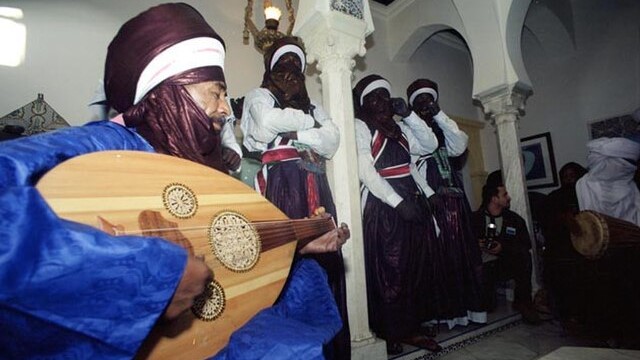Across Algeria, music remains more than an art form. In markets, public squares, and private gatherings, it serves as a vessel for oral history, carrying legends, shared experiences, and fragments of the past into the present. These traditions have endured political upheaval, colonial rule, and rapid modernization, evolving without losing their essential identity.
Among the most recognizable of Algeria’s musical forms is Chaabi. Born in the bustling neighborhoods of Algiers, it draws on Arab, Berber, and Andalusian influences. Its buoyant rhythms and poetic lyricism often center on love, longing, and resilience. Performed in cafés and concert halls alike, Chaabi fosters a communal atmosphere in which collective memory is reinforced through song.
Equally influential is Rai, a genre rooted in the coastal city of Oran and popularized in the early 20th century. Initially shaped by folk traditions, it embraced modern instruments such as the guitar, keyboard, and drum kit, fusing local melodies with global sounds. Over time, Rai became a vehicle for commentary on social inequality, political change, and the desire for personal freedom. Its most celebrated performers brought the genre to international audiences, cementing its role as both a cultural export and a reflection of Algeria’s internal debates.
Traditional performances also feature distinctive instruments, including the guembri, a three-stringed bass tied to Gnawa spiritual music, and the bendir, a frame drum used in both festive and ritual contexts. Their tonal depth evokes older soundscapes, anchoring the present in the cadence of the past.
While major cities host formal concerts, the lifeblood of Algerian music runs through rural communities. Here, songs mark seasonal harvests, accompany weddings, and commemorate milestones. These events underscore music’s role as a unifying force, binding generations together through shared rhythm and narrative.
Whether in the intricate phrasing of Chaabi or the raw intensity of Rai, Algeria’s traditional music continues to bridge time and place. It preserves history not as a static record but as a living, evolving dialogue between past and present.
Sources
- Schade-Poulsen, M. (1999). Men and Popular Music in Algeria: The Social Significance of Rai. University of Texas Press.
- Langlois, T. (1996). “The Local and Global in North African Popular Music.” Popular Music, 15(3), 259–273.
- Aydoun, A. (2003). La Musique Algérienne. Paris: Éditions du CNRS.
- Nettl, B., & Béhague, G. (Eds.). (2010). The Garland Handbook of African Music. Routledge.

